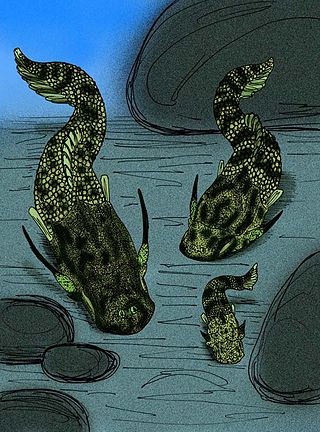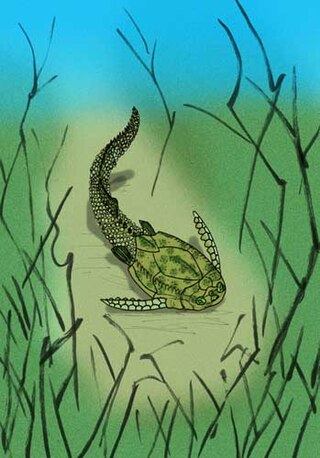
Placoderms are vertebrate animals of the class Placodermi, an extinct group of prehistoric fish known from Paleozoic fossils during the Silurian and the Devonian periods. While their endoskeletons are mainly cartilaginous, their head and thorax were covered by articulated armoured plates, and the rest of the body was scaled or naked depending on the species.

Minicrania is an extinct genus of tiny antiarch fish, with armor averaging up to about 2 centimetres (0.79 in) long, which lived during the Lochkovian epoch in Early Devonian Yunnan Province, China and northern Vietnam.

Parayunnanolepis xitunensis is an extinct, primitive antiarch placoderm. The fossil specimens, including a marvelously preserved, intact specimen, are known from the Lochkovian Epoch-aged Xitun Formation of Early Devonian Yunnan. The armor is very similar to that of Yunnanolepis, but is distinguished by being comparatively more flattened.

Vukhuclepis lyhoaensis is an extinct, primitive antiarch placoderm. Specimens are of mostly complete thoracic armor from the Early Devonian Ly Hoa Formation in Vietnam. The armor is very similar to that of Yunnanolepis, but is distinguished by a unique pattern of raised ridges radiating from a point at the center of the dorsal shield of the thoracic armor. A similar, albeit more floral-looking pattern is seen in the Chinese Mizia. V. lyhaoensis' armor is further ornamented with small tubercles.
This page is based on this
Wikipedia article Text is available under the
CC BY-SA 4.0 license; additional terms may apply.
Images, videos and audio are available under their respective licenses.





